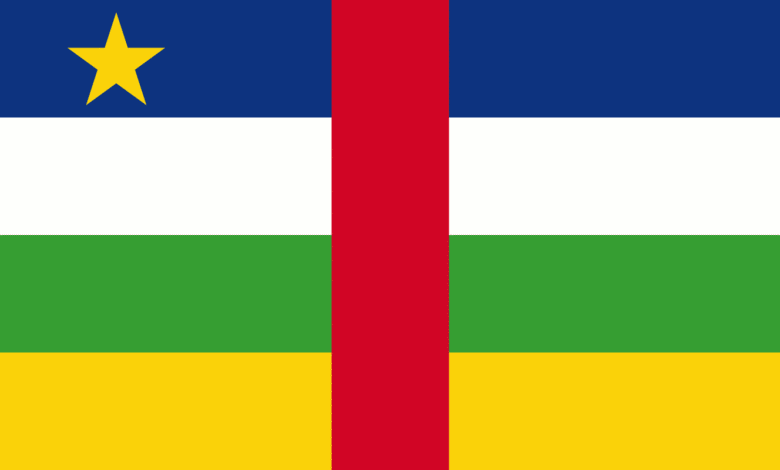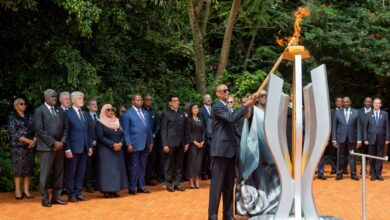Central African Republic Facts, History, Culture & Travel – Africa Facts Zone
The Central African Republic: A Nation Caught in Turmoil

A Quick Overview of the Central African Republic
Central African Republic: Landlocked country in Central Africa
Capital and Largest City: Bangui
Official Languages: Sango, French
Population: Approximately 5.5 million (as of 2021)
Area: 620,000 square kilometers (240,000 sq mi)
Current State: Scene of a civil war since 2012
Independence from France: 13 August 1960
Economic Status: Among the ten poorest countries in the world, with the lowest GDP per capita at purchasing power parity
A Landlocked Country Struggling to Find Its Footing
The Central African Republic (CAR) is a landlocked nation situated in the heart of Africa. It is known for its abundant natural resources and rich cultural heritage.
However, since its independence from France in 1960, the country has been plagued by political instability, civil unrest, and economic challenges. Despite its potential, the CAR remains one of the poorest and most fragile countries in the world.
A History of Conflict and Turmoil
The CAR’s political history has been marked by a series of coups, dictatorships, and civil wars. In 1966, Jean-Bedel Bokassa seized power and ruled the country with an iron fist until his overthrow in 1979.
During Bokassa’s reign, the country’s name was briefly changed to the Central African Empire.
Since the 1990s, the CAR has been embroiled in a series of conflicts between various rebel groups and the government.
Also Read: Ancient Civilizations of Africa and the African Empire
In 2013, the Seleka, a coalition of predominantly Muslim rebels, seized power, leading to the formation of the anti-Balaka, a mostly Christian militia group.
This conflict has resulted in widespread violence, displacement, and human rights abuses.
The Role of External Actors
The CAR’s instability has attracted the attention of various external actors, including the United Nations, France, and Russia.
Since 2014, the UN has maintained a peacekeeping mission in the country known as MINUSCA. The mission aims to protect civilians and support the political process.
France, the former colonial power, has also been involved in the CAR, providing military support and aid. However, in recent years, the CAR has turned to Russia for military assistance, leading to the deployment of Russian mercenaries from the Wagner Group.
This has raised concerns about Russia’s growing influence in the region and the potential exploitation of the CAR’s natural resources.
The Humanitarian Crisis
The ongoing conflict in the CAR has led to a severe humanitarian crisis. Millions of people have been displaced, and access to basic services such as healthcare and education remains limited.
The country has one of the highest rates of poverty and malnutrition in the world, with over 70% of the population living below the international poverty line.
The Potential for Change
Despite the challenges facing the CAR, there are glimmers of hope for a better future. In 2019, the government signed a peace agreement with 14 armed groups, known as the Political Agreement for Peace and Reconciliation (APPR-RCA).
This agreement provides a roadmap for long-term peace and stability, although its implementation has been hampered by ongoing violence.
Also Read: Cape Verde Facts, History, Culture & Travel – Africa Facts Zone
In 2020, President Faustin-Archange Touadéra was re-elected, promising to bring peace and stability to the country. However, his government controls only a portion of the country, and rebel groups continue to challenge his authority.
Conclusion
The Central African Republic has immense potential, but it remains trapped in a cycle of conflict and instability.
Addressing the root causes of the crisis, such as poverty, inequality, and weak governance, will be crucial for the country to break free from this cycle and build a more prosperous and peaceful future.
With the international community’s support and a commitment to inclusive dialogue and reconciliation, the CAR can overcome its challenges and emerge as a beacon of hope in a region that has long been plagued by conflict.
FAQs
What are the main causes of the conflict in the Central African Republic?
The conflict in the CAR is rooted in a complex mix of political, ethnic, and religious tensions. The country’s history of coups, dictatorships, and unequal distribution of power and resources has fueled resentment among various groups.
The 2013 conflict between the Seleka and anti-Balaka militias further exacerbated these tensions along religious lines.
How has the international community responded to the crisis in the CAR?
The international community has responded to the crisis in the CAR through various means, including the deployment of UN peacekeepers, the provision of humanitarian aid, and support for the political process.
Since 2014, the UN has maintained a peacekeeping mission in the country known as MINUSCA. This mission aims to protect civilians and support the political process. France and Russia have also provided military support and aid.
What are the main challenges facing the CAR in its efforts to achieve peace and stability?
The main challenges facing the CAR in its efforts to achieve peace and stability include the ongoing violence and insecurity, the weak capacity of state institutions, the lack of trust between various groups, and the limited resources available for reconstruction and development.
The country also faces significant challenges in terms of poverty, inequality, and access to basic services.
What is Russia’s role in the CAR, and what are the implications of its involvement?
Russia has become increasingly involved in the CAR in recent years, providing military assistance and deploying mercenaries from the Wagner Group.
This has raised concerns about Russia’s growing influence in the region and the potential exploitation of the CAR’s natural resources. Some analysts argue that Russia’s involvement is part of a broader strategy to expand its influence in Africa and counter Western influence in the region.
What are the main human rights concerns in the CAR?
The conflict in the CAR has led to widespread human rights abuses, including extrajudicial killings, torture, sexual violence, and the recruitment of child soldiers.
Armed groups have targeted civilians based on their ethnicity and religion, and the government has been accused of failing to protect its citizens and hold perpetrators accountable.
What is the economic situation in the CAR, and what are its main economic challenges?
The CAR is one of the poorest countries in the world, with over 70% of the population living below the international poverty line.
The country’s economy is heavily dependent on agriculture and the extraction of natural resources, such as diamonds, gold, and timber. However, the ongoing conflict has disrupted economic activity and limited investment in the country.
The CAR also faces significant challenges in terms of infrastructure, access to markets, and the diversification of its economy.
What is the role of civil society in the CAR, and how has it responded to the crisis?
Civil society in the CAR has played a crucial role in responding to the crisis, providing humanitarian assistance, advocating for human rights, and promoting reconciliation and dialogue.
However, civil society organizations have also faced significant challenges, including threats, attacks, and limited resources. Despite these challenges, many civil society leaders have remained committed to building a more just and peaceful society in the CAR.





